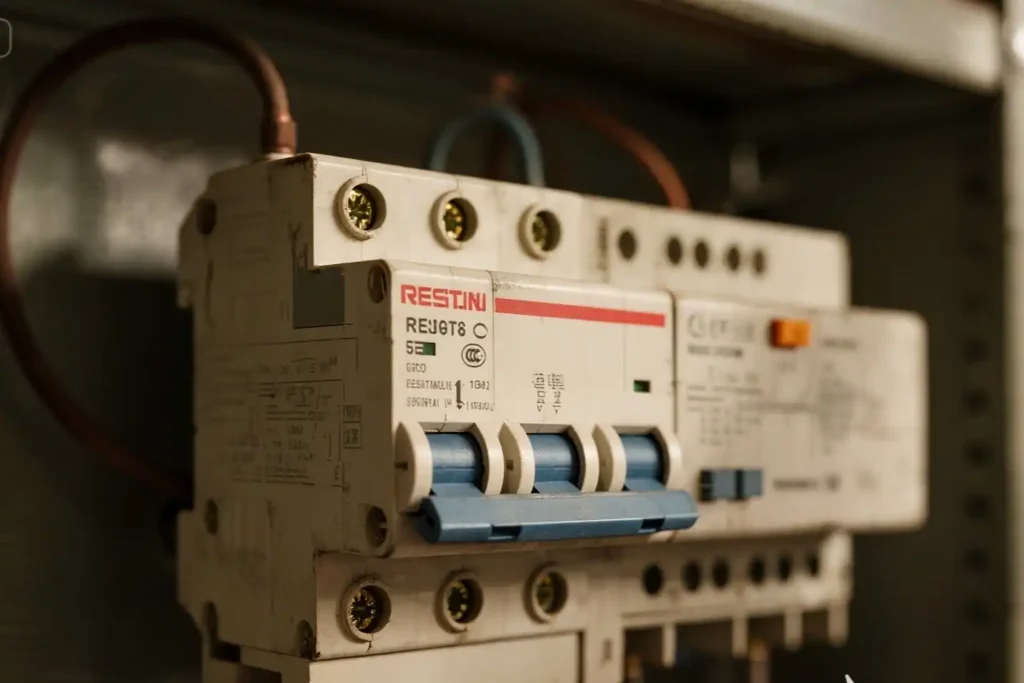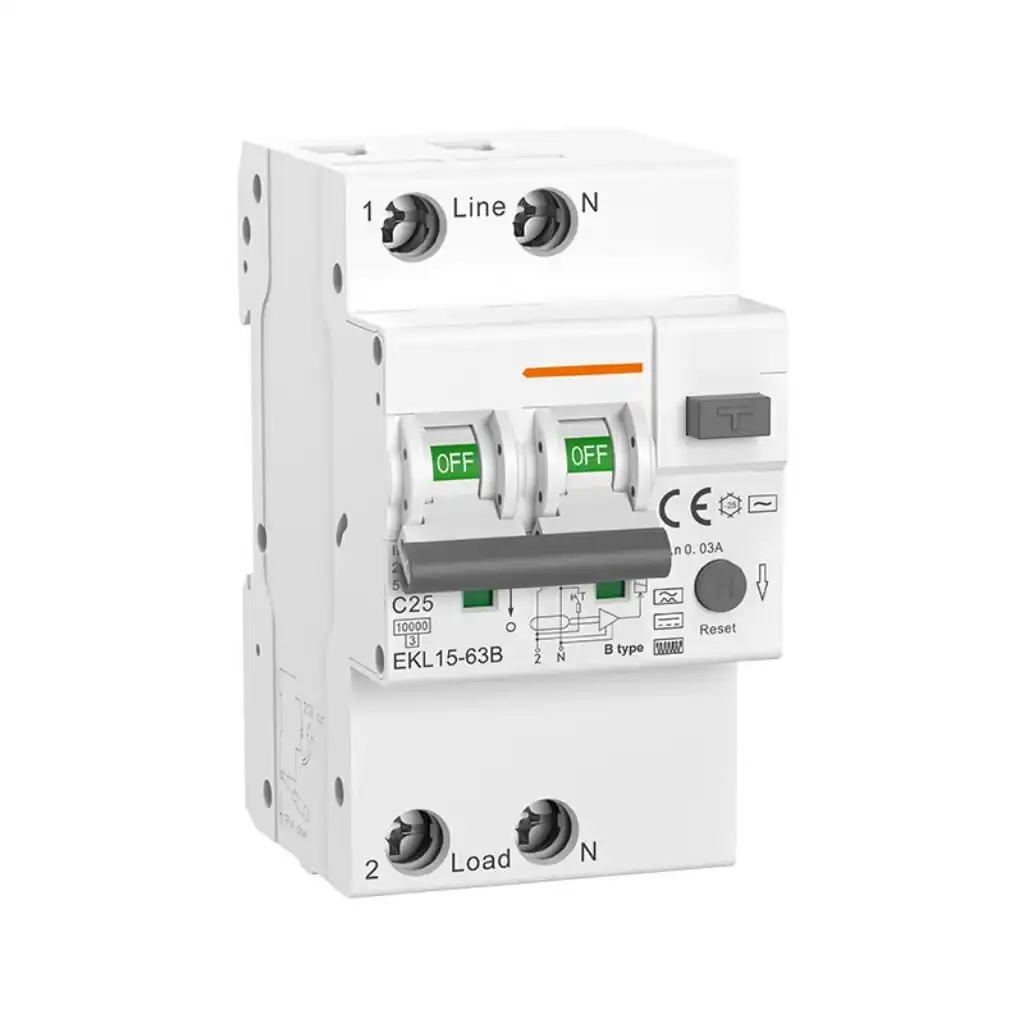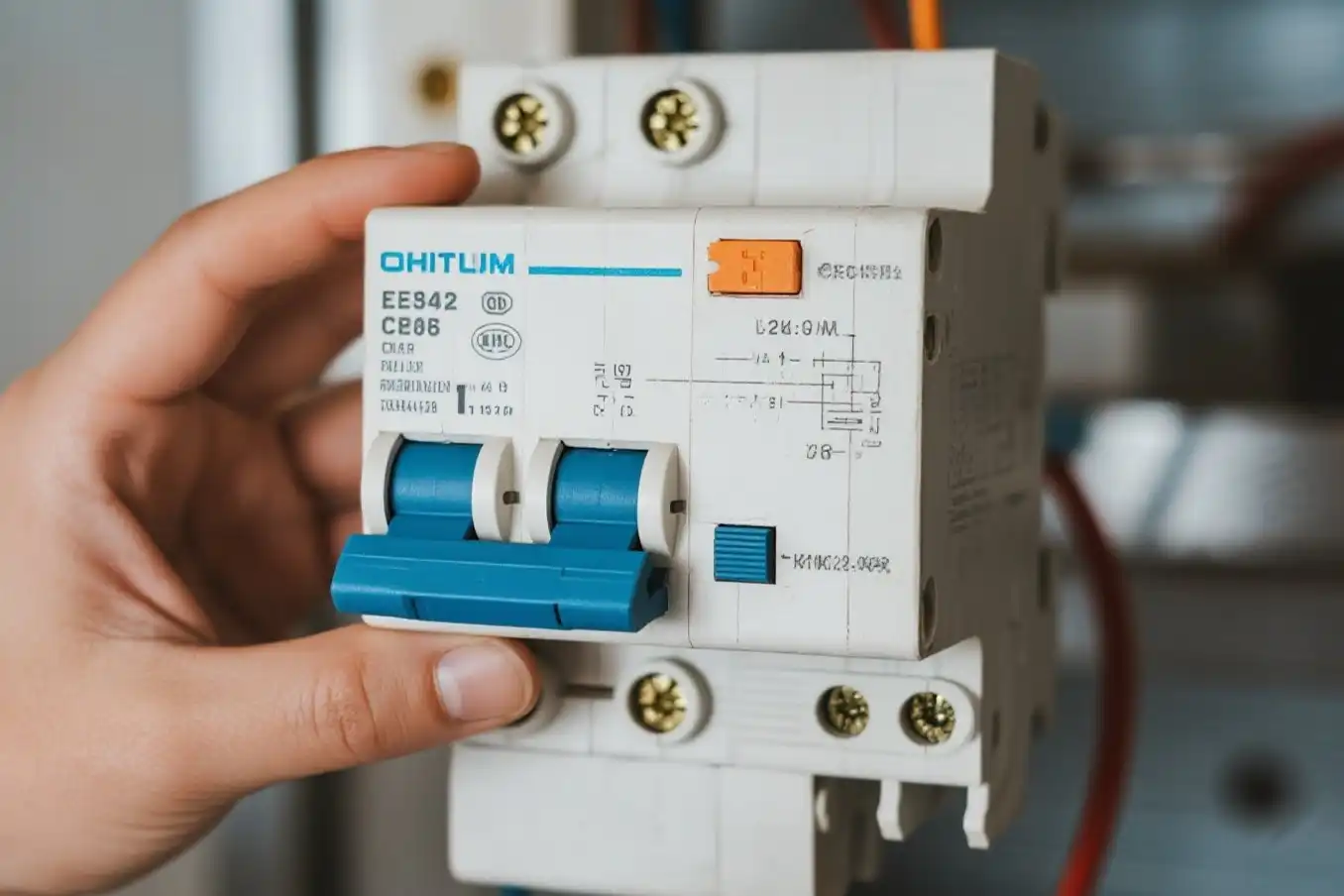You need good protection for your electrical system. An RCBO gives you two types of safety. It protects against electrical faults and overcurrent. This device helps stop fires and shocks. It meets new safety rules like BS 7671: 2018. You save space in your panel with fewer devices. It is also easier to install. Today, RCBOs are very popular. The market is worth $2.5 billion in 2024. RCBOs are growing fast all over the world.
Key Takeaways
- RCBOs give two types of protection in one device. They stop too much current. They also find dangerous electricity leaks. This helps keep people and property safe.
- Using RCBOs saves space in your electrical panel. It makes installation easier than using two separate devices.
- Smart RCBOs have extra features like remote alerts. They can also test themselves. These features help you watch and control your electrical system better.
- RCBOs protect each circuit by itself. Only the problem area shuts off if there is trouble. The rest of your system keeps working as usual.
- You should test RCBOs often and install them the right way. This makes sure they work well. It helps keep your home or business safe from electrical dangers.
RCBO Features
Dual Protection
When you use an RCBO, you get two kinds of safety. This device gives overcurrent protection and residual current protection in one small unit. Overcurrent protection stops too much electricity from going through wires. This can happen if you use too many devices or if there is a short circuit. Residual current protection, also called earth leakage protection, finds when electricity leaves the normal path. This might happen if a wire breaks or if someone touches a live part.
- RCBOs follow strict rules like IEC/EN 61009-1 and BS 7671.
- They use thermal and magnetic tripping to stop overloads and short circuits.
- Some models work with both Type AC and Type A leakage currents.
- Some RCBOs have 3P+N poles, so they turn off all live and neutral wires at once for full isolation.
- You can pick different rated currents, usually from 6A to 40A, and choose trip curves for different loads.
- RCBOs can handle strong fault currents, up to 10kA.
- Sensitivity choices include 30mA for personal safety and higher values for equipment protection.
- The small size saves space in your panel and makes it easier to install.
Tip: Using an RCBO helps you follow new safety codes and lowers the chance of fire or electric shock.
How It Works
RCBOs watch your electrical system all the time. They look for problems like too much current or electricity leaking to the ground. Here is what happens step by step:
- The RCBO checks the current in both live and neutral wires.
- It looks for any imbalance, which can mean overload, short circuit, or earth leakage.
- If you use too many devices and cause an overload, the RCBO trips to stop overheating.
- If a short circuit happens, the RCBO quickly cuts off power to stop sparks.
- If electricity leaks to the ground, maybe through a person, the RCBO senses this and shuts down the circuit in milliseconds.
- By turning off power fast, the RCBO keeps you and your property safe.
You only need to reset the RCBO if there is a real problem. This makes your system safer and more dependable.
Smart RCBOs
Now, you can get smart RCBOs with extra features. These devices use microcontrollers to make things safer and easier. Some smart RCBOs can send alerts to your phone if something goes wrong. Others let you check your circuits from far away. Some models even record data about faults and energy use.
- Smart RCBOs help you find problems before they get worse.
- They let you watch and control your system from far away, which is good for big buildings.
- Some models test themselves to make sure the protection always works.
Note: Smart RCBOs give you more control and information, so your electrical system is even safer.
RCBO vs. Other Devices
RCD and RCCB
You might see RCDs and RCCBs in many panels. These devices check for earth leakage currents. If they find a leak, they trip the circuit. This helps protect you from electric shock. But RCDs and RCCBs do not stop overloads or short circuits. You need other devices for full protection.
Here is a table to compare RCDs and RCBOs:
| Device Type | Functionality | Trip Threshold | Protection Scope | Panel Space Impact |
|---|---|---|---|---|
| RCD | Finds leakage current | Trips if leakage is over 300 mA (or less) | Protects people from electric shock | Needs more breakers, uses more space |
| RCBO | Has RCD and breaker in one | Trips on leakage and overcurrent | Protects people, equipment, and building | Saves space by combining two devices |
Tip: If you want both earth leakage and overcurrent protection, use an RCBO instead of two devices.
MCB
MCBs protect circuits from overloads and short circuits. They trip if too much current flows. This stops wires from getting too hot. MCBs do not find earth leakage. For electric shock protection, add an RCD or RCCB.
| Category | MCB | RCBO |
|---|---|---|
| Functionality | Stops overload and short circuit | Stops overload, short circuit, and earth leakage |
| Safety | Stops circuit damage | Stops damage and protects people |
| Applications | Used for general appliances | Used in bathrooms and outdoors |
| Cost | Lower | Higher, but gives more protection |
| Installation Space | Needs extra device for leakage | Small, combines both functions |
Key Differences
Choosing an RCBO makes installation easier. It does the job of an MCB and an RCD or RCCB. You only need one device for each circuit. This saves space and time. Many electricians say RCBOs mean fewer parts in the panel. This makes wiring easier and lowers mistakes.
Now, RCBOs are as small as MCBs. You get full protection without using more space. You also meet new safety codes with less work. If you want a safer and neater panel, RCBOs are a smart choice.
Applications and Benefits
Where to Use
You can put RCBOs in many places at home or work. They are good for lights, wall plugs, and special machines. Many people use them in kitchens, bathrooms, and outside. These spots have a higher chance of electric shock. You can also use RCBOs for single circuits that power things like computers, fridges, or air conditioners. If you use RCBOs on each circuit, only the one with a problem will turn off. The rest of your system keeps working as normal.
- Lighting circuits in homes and offices
- Power outlets in living rooms, kitchens, and bathrooms
- Outdoor sockets and garden equipment
- Dedicated circuits for appliances like washing machines or computers
Tip: Put RCBOs on circuits that need more safety or when you do not want the whole panel to shut off if there is a problem.
Safety and Compliance
You want your electrical system to be safe and follow all the rules. RCBOs help you do this. They protect you from electric shocks and help stop fires. RCBOs act fast to stop dangerous problems before they hurt anyone. They also help you meet important safety codes. When you use RCBOs, you follow the newest safety standards. This makes checks easier and helps you avoid trouble with insurance or building rules. By picking RCBOs, you make sure your system is safe and up to code.
RCBOs give both residual current and overcurrent protection in one device. This makes it easy to install and saves money. They find problems quickly to keep people and equipment safe. Using RCBOs means you follow safety rules and have a safer electrical system.
Advantages
Tests and reviews show RCBOs have many good points over other devices:
- You get both overcurrent and earth leakage protection in one device.
- Only the circuit with a problem turns off, so the rest keeps working.
- RCBOs save space in your panel by using just one device instead of two.
- They trip faster, which helps stop electric shocks and fires.
- You can pick different types and settings for what you need.
- RCBOs work with most regular electrical systems.
- Some models stop false trips when motors start or there are short surges.
These things make RCBOs a smart pick for anyone who wants a safer and more dependable electrical system.
Selection and Setup
Choosing an RCBO
You must choose the right RCBO for your needs. First, think about what you will use it for and where it will go. Different types work better in different places:
- Type B is best for homes and small shops. It works well when there are not many power surges.
- Type C is good for offices and factories. It can handle more power when machines turn on.
- Type D is for big factories with large motors or chargers. It can take very high surges.
Check the rated current. It should be the same as the total current of all your devices. Pick the right tripping curve so the RCBO does not trip by mistake. Make sure your RCBO follows safety rules like BS 7671. For homes with lots of electronics, Type A RCBOs are the best. They can find both AC and pulsating DC currents. This keeps you safer.
| Feature | Type AC RCBO | Type A RCBO |
|---|---|---|
| Detects AC | Yes | Yes |
| Detects Pulsating DC | No | Yes |
| Use | Older circuits | Modern circuits with electronics |
| Cost | Lower | Higher |
| Safety | Basic | Enhanced |
Tip: Always read the manufacturer’s guide. Look for RCBOs that can switch both line and neutral. This is important if you have solar panels or backup power.
Installation Tips
Most RCBOs are easy to put in because they are modular or plug-on. Always turn off the main power before you start. Follow the wiring diagram from the maker. Make sure you connect the line and load wires the right way. If you have solar panels or batteries, use a bidirectional RCBO. This keeps your system safe and stops damage. Tighten all wires so they do not come loose. Loose wires can make the RCBO trip when it should not.
- Use the right tools to tighten the terminals.
- Check that the RCBO fits in your panel.
- Test the RCBO after you install it by pressing the test button.
Note: If you are not sure what to do, ask a licensed electrician for help.
Maintenance
Keep your RCBO working by checking it often. Press the test button every few months to see if it trips. Look for any signs of damage or wear. If it trips a lot, check for loose wires or too many devices on the circuit. Clean dust from your panel so it does not get too hot. Replace any broken RCBO right away.
- Test the RCBO at least two times a year.
- Listen for buzzing or clicking noises.
- Change old or broken RCBOs to keep your system safe.
Regular checks help you stop bigger problems and keep your electrical system safe.
You help keep your home or business safe from electrical dangers. Modern circuit breakers give two kinds of protection. They stop too much current and leakage faults. These devices fit in small spaces and are easy to put in.
- They find problems fast to help stop shocks and damage.
- They are very sensitive and reset quickly, so you wait less.
- More people want these devices because they make things safer.
Picking the right protection helps you follow safety rules and keeps your important things safe.
FAQ
What does RCBO stand for?
RCBO stands for Residual Current Circuit Breaker with Overcurrent protection. You get two types of safety in one device: protection from electric shocks and from too much current.
Can you use RCBOs in old electrical panels?
You can use RCBOs in many older panels if there is enough space. Always check the panel size and wiring. Ask an electrician if you are not sure.
How often should you test your RCBO?
You should press the test button on your RCBO every three to six months. This helps make sure the device works when you need it.
What should you do if your RCBO keeps tripping?
First, unplug all devices on the circuit. Reset the RCBO. If it trips again, you may have a wiring problem or faulty device. Call a licensed electrician to check your system.
Do RCBOs work with solar panels or backup power?
Yes, many RCBOs work with solar panels and backup power. Look for models that switch both line and neutral. This gives you better safety for modern systems.
The following information may be of interest to you
Breaking Down the Three Types of Circuit Protection for Beginners
Residual current circuit breaker
Overcurrent protection residual current circuit breaker
What Makes an RCD Trip Without Triggering the MCB
How to Prevent Shocks with RCD for Electric Vehicle Charging





